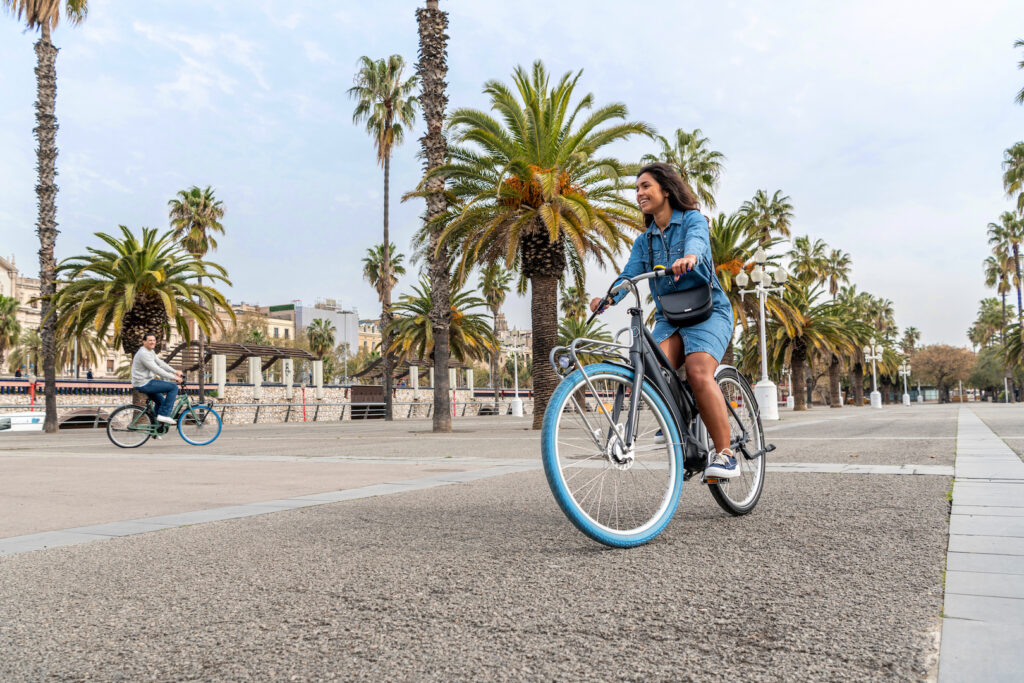Learn more about our ambition to offer a fully circular product line by 2025
We’re on a mission to make cities more liveable. One way we’re doing this is by accelerating our promise of offering a fully circular product line by 2025. What you might not have heard of is how. So, let’s jump right in.
First, let’s get real.
A goal without a plan is just a wish. So, we’ve created a roadmap of solid next steps to get us where we’re going – one spinning blue front tire at a time. And look, we’d be lying if we said the process of closing our material loop was going to be quick and easy. Which isn’t to say we can’t or won’t hit our goal, but we do need a quick reality check.
Let’s take a look at our popular Deluxe 7 bike. We asked Partners for Innovation, an independent third party, to conduct a ‘circularity quickscan’ of the bike to assess its environmental impact. The results rolled in at 88% circularity. Which might sound good to some. But for us, it’s not good enough. We’re aiming higher.

Let’s break it down.
A bike with an 88% circularity score means there’s still 12% of it that isn’t circular. For this, there are two main reasons.
- New materials: We can’t simply stop using new materials in our manufacturing process. This contains for example rubber and metal. Acquiring this material has a climate impact due to emissions from mining, plus adding more material to the total material pool, rather than reusing it from somewhere else. This reason alone contributes to 9% of the bike not being circular.
- Leftover waste: The last 3% preventing full circularity comes from leftover waste. You’d think this should be recycled, and so do we. But unfortunately certain parts of our bikes can’t be recycled – yet. For example, although our saddles are simple in design, they consist of many different layers glued together which are difficult to separate and therefore recycle. If anyone has a solution for this, let us know!
The power of recycling partnerships
We’re using smart design, smart people and smart technology to tackle this. For example, this year we partnered with tire manufacturers to return old or unused tubes so they can be properly recycled. We also started shredding the unused outer tubes, producing new material granulate to build other things, like floor mats. This way in 2020 alone, we saved over 19K inner tubes, 15K handle grips and 16K outer tires from clogging landfills in Belgium and the Netherlands. Combined, this prevented around 15 tons of rubber from creating toxins and greenhouse gasses from being burned – a small but important step in the right direction.
We’ve also been investigating the possibilities of bio-based materials in our manufacturing processes. Check out this talk by one our founders Richard Burger at the National Conference Circular Economy in The Netherlands (February 2021).
Involving our members
As Swapfiets continues to grow, reaching new cities worldwide, one major advantage is that our members are along for the ride with us. If their Swapfiets breaks down we’ll fix it on the spot or swap it for a new one – meaning no bikes end up in the scrap heap. We make sure each and every product can easily be repaired, eventually starting a new life with someone else in the Swapfiets community – reducing unnecessary waste and improving the lifecycle of our entire portfolio. Because we believe the only way to achieve full circularity is together.
So watch out, 2025. We’re coming for you.